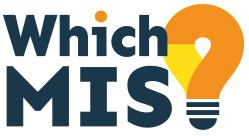Simon Freeman, MD of Education at IRIS Software Group, gives his views.
As everyone in education knows all too well, the UK is currently suffering from a severe shortage of teaching staff – something that’s exacerbating issues such as teacher workload, low morale, and workplace stress.
But it’s not just recruitment that’s the problem; staff retention is also proving difficult. As the Education Policy Institute has reported: “Retention rates have improved dramatically for early-career teachers in the past couple of years, but there has been less improvement for mid-career teachers, and almost none for experienced teachers.”
Unfortunately, the National Education Union found the situation is unlikely to improve any time soon. According to its recent report, 16% of teachers plan to leave the education profession within two years, and 41% want to be out within five years. Workloads, pay, accountability, and pupil behaviour were all cited as top reasons for leaving.
In response to the widespread recruitment and retention issues, the government created the early career framework, and announced its goal of raising starting salaries to £30,000. While pay increases like this can indeed help – especially with early-career recruitment and retention – it is important not to forget other factors too. Specifically, what can be done at the trust level.
Embrace internal mobility
Within multi-academy trusts (MATs), teachers are employed by the trust rather than individual schools. MATs can really benefit from the flexibility this provides, especially in terms of internal mobility.
For example, teachers can split their time between two schools – one that is difficult to recruit for, and one that is less difficult to recruit for. This can take at least some of the pressure off, especially for hard-to-recruit-for schools.
This strategy can also help with hiring new talent. If a trust recruits a new teacher, they can start by working across multiple schools to help them find out which environment suits their particular skillset – making it more likely they’ll stay.
Of course, teachers can also benefit from this internal mobility, as it allows them to discover what kind of environment is best for them and where they want to progress.
Enhance development opportunities
Having a solid training and development framework (such as post-graduate teacher training courses) can help teaching staff develop their skills, show the trust is investing in their future, and bolster retention.
MATs can particularly excel in continuing professional development. As Ofsted has reported, “the best MATs are particularly strong on developing their workforce, offering opportunities for promotion, learning and leadership across staff levels. Academic research suggests that this can improve retention rates.”
Adopt a robust HR system
From the challenges of overly ambitious workloads to pupil behaviour management and long hours, there are many stressors involved in being a teacher. Sadly, in March 2023, 83% of teachers said their job had adversely affected their mental health in the last 12 months.
It’s no secret unhappy teachers are more likely to leave education. While there is no easy fix, adopting a robust HR system can help MATs tackle the staff mental health crisis. After all, the right HR support improves access to broader support, and can help staff track their progress and development.
Widen the recruitment net
MATs should also consider enhancing their recruitment strategy. For example, rather than just posting vacancies on government websites and relying on education-specific recruitment companies, MATs should also post vacancies on local authority-maintained spaces within education-specific platforms. This can be more cost-effective and can also widen the net of potential talent.
Admin-saving solutions
Teachers don’t go into education to undertake administrative tasks. And yet, so many are bogged down in repetitive and manual tasks – recording progress, writing up reports, tracking goals, and assessing and establishing targets.
For this reason, it’s well worth MATs investing in time- and admin-saving solutions. Cloud-based management information systems (MIS) are a good idea, as they can help with everything from general school management to communications, assessments, and reporting. Indeed, the right MIS can help prevent data duplication and free up a lot of teacher time.
When teachers spend the majority of their time with children – the most rewarding part of the job – they’re more likely to stick around.
Facing the challenge of staff shortages
In order to tackle the ongoing staff recruitment and retention difficulties, government-initiated strategies are vital.
However, MATs should do everything they can to help recruitment and retention too. From increasing centralisation to embracing time- and admin-saving solutions, there are many steps trusts can take to face the current situation head on.

